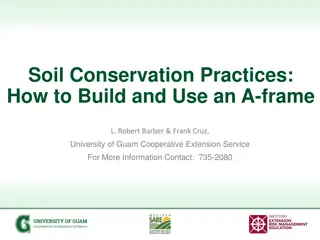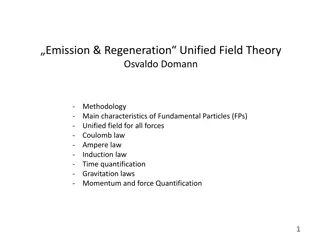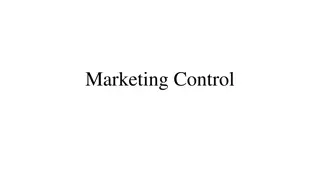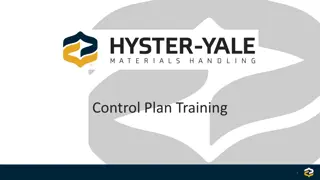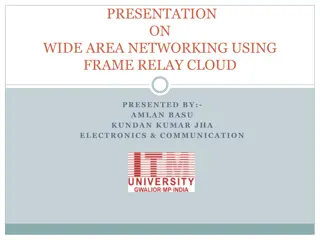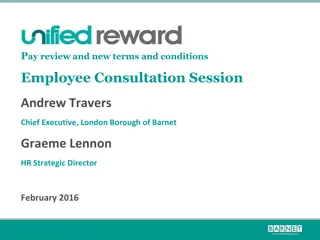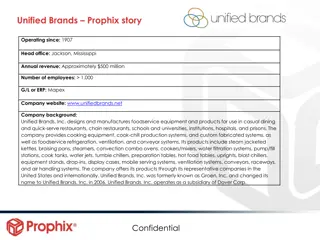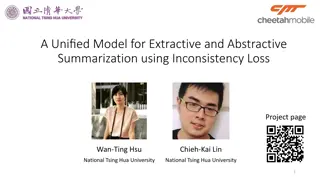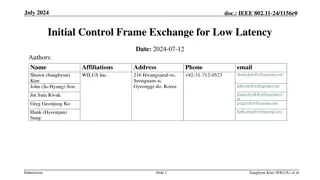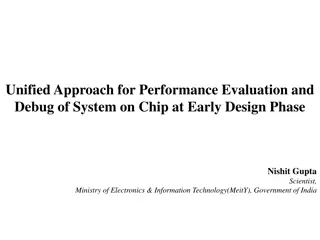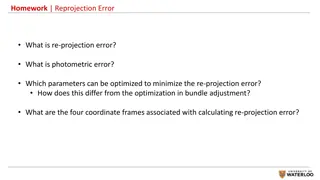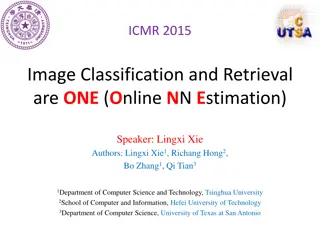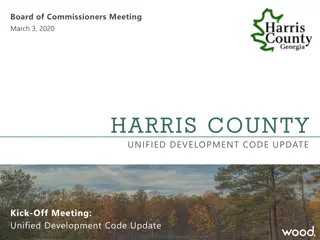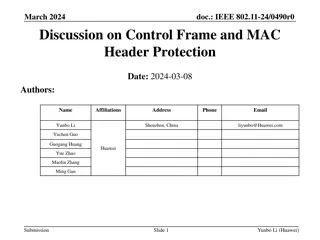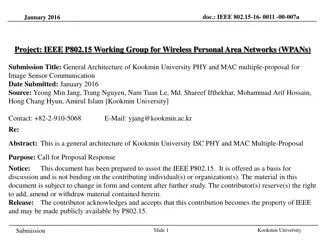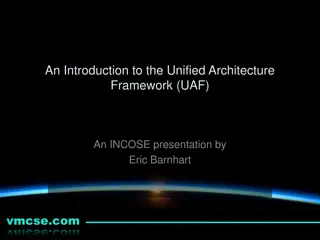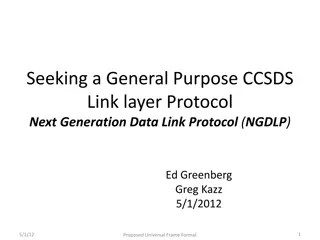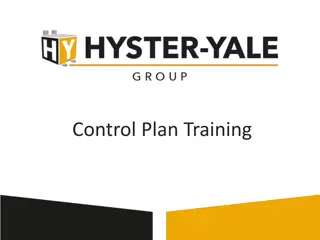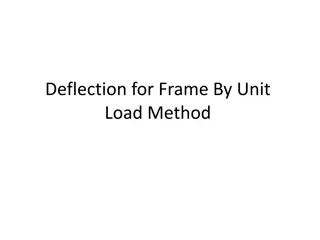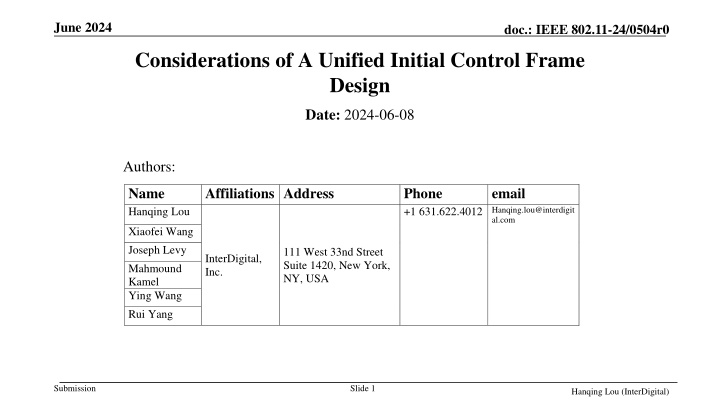
Unified Initial Control Frame Design Considerations
Explore the design considerations for Initial Control Frames (ICF) in various scenarios like Non-Primary Channel Access, Dynamic Subchannel Operation, and Power Saving, discussing the potential for a unified design approach. The document dives into procedures and commonalities in frame exchanges, highlighting the need for adaptability in different modes and scenarios within IEEE 802.11-24/0504r0.
Download Presentation

Please find below an Image/Link to download the presentation.
The content on the website is provided AS IS for your information and personal use only. It may not be sold, licensed, or shared on other websites without obtaining consent from the author. If you encounter any issues during the download, it is possible that the publisher has removed the file from their server.
You are allowed to download the files provided on this website for personal or commercial use, subject to the condition that they are used lawfully. All files are the property of their respective owners.
The content on the website is provided AS IS for your information and personal use only. It may not be sold, licensed, or shared on other websites without obtaining consent from the author.
E N D
Presentation Transcript
June 2024 doc.: IEEE 802.11-24/0504r0 Considerations of A Unified Initial Control Frame Design Date: 2024-06-08 Authors: Name Hanqing Lou Affiliations Address Phone +1 631.622.4012 Hanqing.lou@interdigit email al.com Xiaofei Wang Joseph Levy Mahmound Kamel Ying Wang Rui Yang 111 West 33nd Street Suite 1420, New York, NY, USA InterDigital, Inc. Submission Slide 1 Hanqing Lou (InterDigital)
June 2024 doc.: IEEE 802.11-24/0504r0 Abstract Initial control frame (ICF) and initial control response (ICR) frame exchanges were discussed in different scenarios, e.g., [2-3]. Different procedures may be needed for different scenarios. However, they share some commonalities if we consider them as the dynamic change from one mode to another. In this contribution, we review ICF design considerations for below scenarios: Non-Primary Channel Access (passed motion [1]) Dynamic subchannel operation Power saving (passed motion [1]) In-device coexistence Dynamic puncturing for Secondary Channel Further, we summarize the design considerations and discuss whether a unified design for ICF should be considered. Submission Slide 2 Hanqing Lou (InterDigital)
June 2024 doc.: IEEE 802.11-24/0504r0 Non-Primary Channel Access Change of mode: Primary channel mode vs non-primary channel mode General procedure: An AP announces a preselected anchor channel. When the primary channel is occupied by OBSS transmissions, the AP and its associated non-AP STAs switch to monitor the anchor channel. The AP/STAs perform channel access on the anchor channel. First frames exchanged are ICF/ICR. ICF design considerations: Support one-to-one transmissions and one-to-multiple transmissions Support both DL/UL transmissions. ICF could be initiated by an AP or a non-AP STA. Existing Trigger frame, e.g., MU-RTS/BSRP, may be reused. We need to extend them to allow uplink transmissions of the ICF. ICF Data ICF Primary busy STA1 ICR ACK Primary busy STA2 Switch points Subchannel switching from primary to non-primary Subchannel switching from non-primary to primary Submission Slide 3 Hanqing Lou (InterDigital)
June 2024 doc.: IEEE 802.11-24/0504r0 Dynamic Subchannel Operation Change of mode: Static subchannel mode vs dynamic subchannel mode General procedure : An AP acquires a wideband channel. The AP asks one or more STAs to park on a secondary subchannel by transmitting an ICF. The intended STA switches to the secondary subchannel and respond with an ICR. ICF design considerations: Including padding so the intended STAs have time to switch. Support both one-to-one and one-to-multiple transmissions. The ICF is transmitted in DL by the AP. Existing Trigger frame may be reused to convey minimum necessary information. If the ICR is carried by non-HT Dup PPDU which are not transmitted on the primary channel, modifications to the existing TF are needed. Receiving STAs need to distinguish whether it is a legacy Trigger frame or a Trigger frame for DSO (so that it could park on the secondary channel till the end of the TXOP). Ask STA1 to monitor a secondary subchannel ICF ICF Data ICF ICF AP Primary channel ICR ACK STA1 Primary channel Switch points Subchannel switching from primary to non-primary Subchannel switching from non-primary to primary Submission Slide 4 Hanqing Lou (InterDigital)
June 2024 doc.: IEEE 802.11-24/0504r0 Power Saving Change of mode: Power saving mode vs full operation mode. General procedure: STAs are in the power save mode with low Rx Nss, narrow Rx bandwidth, low MCS, etc. A STA switches to the operation mode indicated in the ICF frame. ICF design considerations: Extra padding is needed for the STA to switch mode. Both one-to-one and one-to-multiple communications should be considered. The ICF is transmitted in DL by the AP. If AP power saving is considered, then the ICF could be initiated by a non-AP STA. Operation related parameters, such as the maximum Tx bandwidth, maximum Tx Nss, maximum Tx MCS in the upcoming TXOP could be indicated in the ICF. No existing frame can be used without modification. ICF ICF Data ICF STA1 ICF STA2 ICR ACK Rx Switch points Submission Slide 5 Hanqing Lou (InterDigital)
June 2024 doc.: IEEE 802.11-24/0504r0 Coexistence Change of mode: Interference-free mode vs interference mode General procedure: If a STA foresees an interference (e.g., in-device) may happen, it may transmit an ICF/ICR to report its unavailable time and subchannels. ICF design considerations: Should allow both AP and non-AP STA to initiate the transmission of the ICF. If the ICF is initiated by an AP, we may consider to allow one-to-multiple solicitation. Unavailable time, unavailable subchannel(s) could be carried in the ICF if the ICF is transmitted by a non-AP STA in an unsolicited way. Mode change may not always happen immediately after the ICF/ICR exchange. Some contributions (e.g.,[4-8]) suggest reusing (MU)RTS/CTS frame exchanges for the solicited case. Unavailable time is possible to be signaled this way with modified rules. Solicited S2: additional field to indicate the available time S1: NAV S2:D STA1 (AP) ICF Data ICR ACK STA2 Unavail able Allow responding STA indicate unavailable time S1: Duration Unsolicited STA1 ICF ICR STA2 (AP) Hold transmissions to STA1 Allow a STA to report unavailable subchannels/time/Nss/MCS Submission Slide 6 Hanqing Lou (InterDigital)
June 2024 doc.: IEEE 802.11-24/0504r0 Dynamic Puncturing Change of mode: Static puncturing mode vs dynamic puncturing mode. General procedure: The ICF/ICR exchange indicates the dynamic puncturing is allowed in the TXOP. Method 1: dynamic puncturing information is carried in the ICF/ICR (Pros: STAs could exchange puncturing patterns; Cons: hard to support multi-cast if the ICR needs to carry user specific information. Method 2: dynamic puncturing pattern is carried in the USIG on each 80MHz subblock in the UHR PPDU. The responding STAs may use the full Rx bandwidth to acquire the puncturing pattern. (Pros: support one to multiple. Cons: STA1 may not know the punctured channel of STA2). ICF design considerations: Both one-to-one and one-to-multiple communications should be considered. The ICF could be initiated by an AP or a non-AP STA. No existing frame can be used without modification. At least one field to indicate the dynamic puncturing may happen in the TXOP. Non-HT Dup UHR ICF Data ICF STA1 ICF ICR STA2 ACK ICR ICR Submission Slide 7 Hanqing Lou (InterDigital)
June 2024 doc.: IEEE 802.11-24/0504r0 General Design Considerations for ICF Power Saving Dynamic Puncturing ICF NPCA DSO Coexistence Highlighed Design Consideration No Yes Yes Yes No Transmitted before Mode Change Yes Maybe Maybe Yes Yes ICF/ICR in the same Mode Padding (e.g., FCS2) If with diff modes, padding is needed No Yes Yes No No To support lagecy NAV setting, better to use non-HT Dup PPDU Maybe Maybe Maybe Maybe Maybe Carried in non-HT Dup PPDU Support multicast transmission (one-to- multiple) Yes Yes Yes Maybe Yes Could reuse TF. Need to design whether ICR is carried in TB PPDU Yes Yes Yes Yes Yes Initiated by an AP Yes No Maybe Yes Yes TF is DL only now. Either using TF with modification or a new type, or a new frame. Initiated by a non AP STA Contains Max BW Contains Max Tx/Rx Nss Contains Max MCS/Rx MCS Contains Dynamic puncturing Contains unavailable time Contains QoS Maybe Maybe Maybe Maybe No Maybe Maybe Maybe Maybe Maybe No Maybe Yes Yes Yes Yes Yes Yes Yes Yes Maybe Maybe Maybe Yes No Maybe With unified design, we could define different types/variants for different use cases/scenarios Maybe No Maybe Maybe Good to have in all cases Submission Slide 8 Hanqing Lou (InterDigital)
June 2024 doc.: IEEE 802.11-24/0504r0 Why a Unified Design is Desirable? With a unified frame design, it is easier to consider all the requirements below: Efficiency: one design goal should be the shortest transmission and reception time of the ICF. A unified frame with a mode change type indication may be designed for the purpose. Flexibility: a well-defined frame structure should allow the ICF transmitted in DL/UL, with unicast transmissions/multicast transmissions. Extendibility: by defining different mode change types, it is easier to extend the use of the ICF to any future scenarios. Backward compatibility: to support legacy devices to set NAV correctly, some types of the ICF should be carried by non-HT or non-HT Dup PPDU. We don t expect legacy STAs to perform dynamic mode change and thus they don t need to decode all the fields carried by the ICF. Options: Reusing Trigger frame with exiting types (modifications are needed, e.g., needs to know at least the purpose of the ICF). Reusing Trigger frame with a new type. A new frame. Slide 9 Submission Hanqing Lou (InterDigital)
June 2024 doc.: IEEE 802.11-24/0504r0 Summary Reviewed NPCA, DSO, Power saving, in-device coexistence and dynamic puncturing procedures. Although they are different procedures to achieve different purposes, they share some commonalities. A unified design of initial control frame for dynamic mode change is preferred. 3 options are proposed for the ICF design. Submission Slide 10 Hanqing Lou (InterDigital)
June 2024 doc.: IEEE 802.11-24/0504r0 Reference 1. 2. 3. 4. IEEE 802.11-24/0209r3, Specification Framework for TGbn IEEE 802.11-24/0042r1, Flexible Control frames IEEE 802.11-24/299r1, Initial control frame for bandwidth-switching modes IEEE 802.11-24/0094r0, Probe-Before-Talk and Unsolicited Unavailability Announcement for Co-ex Management IEEE 802.11-23/1964r1, Coexistence Protocols for UHR IEEE 802.11-23/2026r0, Balanced Wireless In-Device IEEE 802.11-23/2002r2, In-device Coexistence and P2P follow-up IEEE 802.11-24/1934r0, in-device interference mitigation follow up 5. 6. 7. 8. Submission Slide 11 Hanqing Lou (InterDigital)


